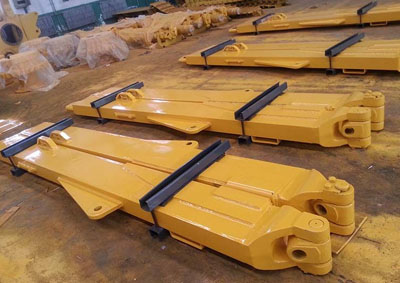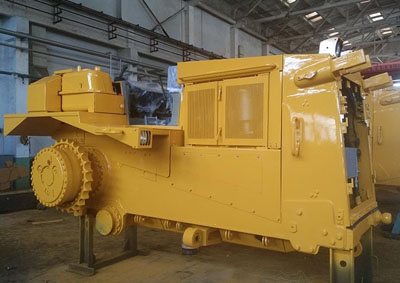Essential Parts of a Bulldozer and Their Functions
Sep. 27, 2024
Bulldozers are powerful earth-moving machines designed for various construction and excavation tasks. Understanding the basic components of a bulldozer and their functions is crucial for both operators and those involved in the maintenance and management of these heavy-duty vehicles.
1. Blade
The blade, also known as the dozer blade or push blade, is the front attachment of the bulldozer. Its primary function is to push, lift, and move materials such as soil, sand, or debris. Blades come in different types, including straight blades for general pushing, U-blades for carrying larger loads, and S-blades for improved rolling and shedding of materials.
2. Ripper
The ripper is a vertical, claw-like attachment located at the rear of the bulldozer. It is used for breaking up hard or compacted materials, such as rock or frozen ground. The ripper teeth penetrate the ground, creating furrows and allowing the bulldozer to loosen and break apart tough surfaces before the material is pushed by the blade.
3. Tracks or Wheels
Bulldozers can have either tracks or wheels, depending on the model and intended use. Track-type bulldozers are more common, providing better traction and weight distribution, making them suitable for challenging terrains. Wheeled bulldozers offer increased speed and maneuverability, making them suitable for certain applications where agility is essential.
4. Cab
The cab is the enclosed compartment where the operator sits. It is equipped with controls for operating the bulldozer, as well as instrumentation for monitoring engine performance and other vital parameters. The cab provides protection for the operator from weather conditions, noise, and debris during operation.
5. Engine
The engine is the powerhouse of the bulldozer, providing the necessary energy to drive the tracks or wheels and operate the hydraulic systems. Bulldozer engines are typically high-torque, diesel-powered engines designed to deliver the robust performance required for heavy-duty earth-moving tasks.
6. Transmission
The transmission system in a bulldozer is responsible for controlling the power generated by the engine and transmitting it to the tracks or wheels. It allows the operator to control the speed and direction of the bulldozer, enabling precise movement and maneuvering during various tasks.
7. Hydraulic System
The hydraulic system is a critical component that powers the movement of the blade and other attachments. It enables the operator to control the lifting, tilting, and angling of the blade, as well as the operation of the ripper. The hydraulic system enhances the versatility and efficiency of the bulldozer in various tasks.
Functions and Applications
Bulldozers are versatile machines used in construction, mining, agriculture, and forestry. Their primary functions include:
Excavation and Earthmoving: Bulldozers are adept at moving large volumes of soil, rock, and debris, shaping landscapes for construction projects.
Grading and Leveling: The precise control of the blade allows bulldozers to grade and level surfaces, ensuring uniformity and smoothness.
Material Pushing: Bulldozers excel in pushing materials, such as clearing debris, leveling piles, and creating pathways.
Breaking Tough Surfaces: The ripper attachment is employed to break up and loosen hard or compacted materials before pushing them with the blade.
By understanding the functions of these essential parts, operators can efficiently and safely operate bulldozers for various applications, contributing to the success of construction and earthmoving projects.
So if you are in need of a reliable and high-quality custom bulldozer parts, look no further than HBXG. Contact us today to learn more about our custom bulldozer parts solutions and how we can help you meet your unique needs.
65
0
0
All Comments (0)
If you are interested in sending in a Guest Blogger Submission,welcome to write for us!




Comments